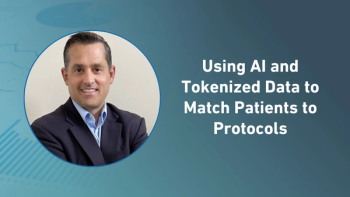
Potential Challenges with FDA’s Multiregional Clinical Trials Guidance
In this video interview with ACT editor Andy Studna, Mwango Kashoki, SVP, global head of regulatory strategy, Parexel, touches on challenges that may be created by the guidance such as meeting multiple regulatory requirements.
In a recent video interview with Applied Clinical Trials, Mwango Kashoki, SVP, global head of regulatory strategy, Parexel, discussed the FDA's new guidance for multiregional oncology trials, emphasizing the need for diverse patient populations in clinical trials. The guidance requires companies to proactively plan trials to ensure data applicability to the US population, considering factors like patient characteristics and healthcare systems. The expected outcome is better-designed trials with broader access and representation.
A transcript of Kahsoki’s conversation with ACT can be found below.
ACT: What does the guidance mean for sponsors and other stakeholders involved in trial design?
Kashoki: I mentioned sites and regions in Africa, Latin America, and the potential relevance of populations there to the US population. There's a little bit of a what I think is a contradiction in the guidance in terms of what companies must do, so on the one hand, the FDA is saying, yes, you could consider expanding to those sites, it's going to help you with your diversity and your population. At the same time, the guidance is also saying you must ensure that wherever you were conducting the study, the standard treatment that's provided in these other regions is reflective of the US standard of care, so that now limits where you can go. I think as companies are considering broadening to what I'm terming, non-traditional regions, they may have to go to specific countries. A very commonly cited example is South Africa, in Africa as an example.
Then, as a last thought, the guidance does pose, I think, a little bit of a challenge if a company is thinking that it's multiregional trial will allow for a more streamlined approach, or more streamlined overall development program. We know that regulators in different regions have requirements for their populations. They too, want to make sure that the trials that are conducted have data that will be relevant to their regional populations, so those regulators will themselves impose region specific requirements, etc., so companies are left in this bind of, how do I meet multiple requirements? It could end up being that a company, depending on how strict the FDA and or any other regional authority is, that could end up being that companies have to do multiple trials, so a global trial, a mix of persons, but if that is not satisfactory to the FDA, then the FDA might say, actually, you need to do another study with a population that is indeed representative. This is why I believe the FDA says first, work through your plan for how you're going to ensure that you're pulling together a representative population and then make sure you talk to us very early on so that we can negotiate, liaise, guide you through that thinking.
Newsletter
Stay current in clinical research with Applied Clinical Trials, providing expert insights, regulatory updates, and practical strategies for successful clinical trial design and execution.






.png)



.png)



.png)
.png)
